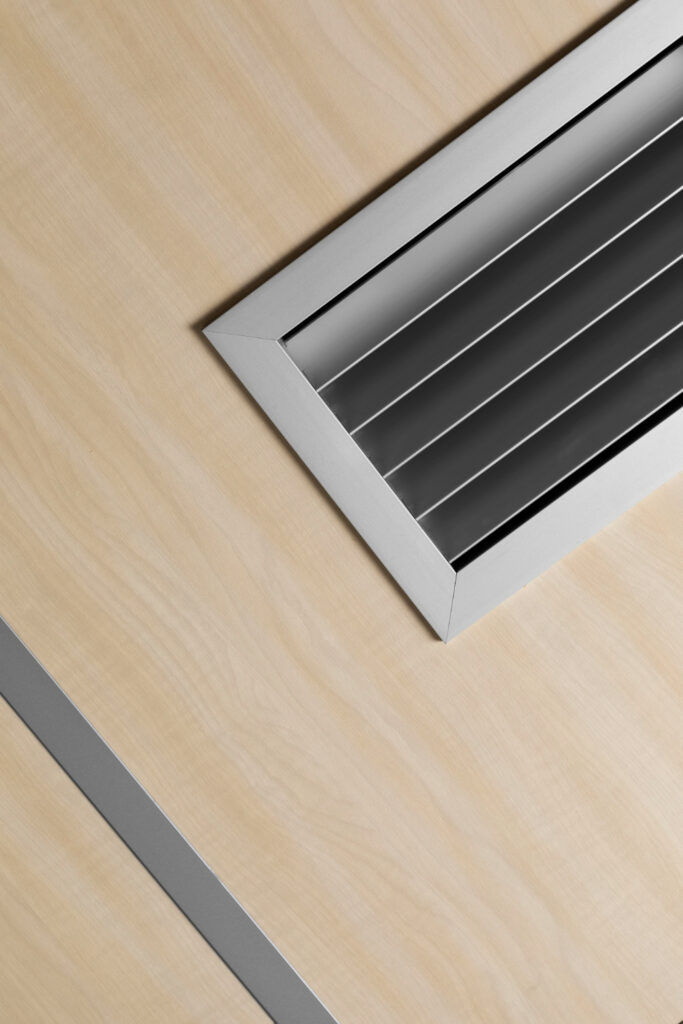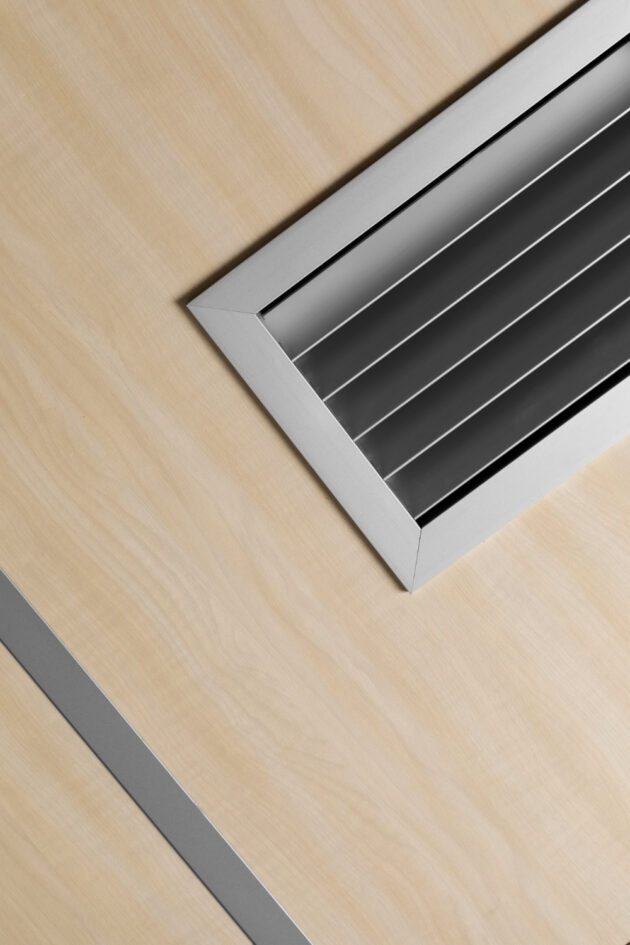
Properly functioning vents are essential for maintaining home comfort and energy efficiency. Blocked or leaky ducts can lead to uneven temperatures, making some rooms too hot or cold and increasing energy consumption. Ensuring clean and unobstructed vents helps improve airflow, reduce utility bills, and enhance overall comfort.
Table of Contents
Introduction to Home Ventilation
Your home’s ventilation system is critical in maintaining indoor air quality and regulating temperatures. These vents ensure that air circulates throughout your living spaces, affecting your comfort and energy efficiency. Knowing how to close fresh air intake vents properly can be a game-changer for comfort and energy savings. Whether you aim to maintain an even temperature throughout your home or keep your energy bills in check, the condition of your vents matters significantly. Proper usage and maintenance can substantially affect how hard your HVAC system works, impacting your indoor environment and wallet.
When people think about home comfort, they often focus on the temperature and ignore the ventilation system, which is, in fact, an integral part of comfort and energy efficiency. Proper ventilation helps circulate fresh air, control moisture levels, and ensure that heating and cooling systems work efficiently. Thus, acknowledging the crucial role of vents can lead to more informed decisions about home maintenance and energy consumption.
The Role of Vents in Indoor Air Quality
Vents filter and distribute air throughout your home, directly impacting indoor air quality. Clean and well-maintained vents help reduce the concentration of pollutants, allergens, and even bacteria that could cause respiratory issues. Imagine the consequences if the air inside your home is not adequately ventilated—the concentration of harmful particles can increase, leading to health problems such as asthma and allergies. Therefore, home ventilation systems’ efficiency significantly impacts your daily comfort levels and overall health.
Furthermore, poor indoor air quality can affect cognitive functions, making you feel lethargic and irritable. Research has indicated that better air quality, especially for kids, can boost brain function. Hence, ensuring your vents are clean and functioning optimally is essential for maintaining a healthy living environment.
How Vent Placement Affects Temperature Regulation
Placement Strategy
Optimal vent placement is essential for achieving balanced indoor temperatures, which also helps maintain energy efficiency. Vents should be positioned to facilitate even airflow distribution across different rooms. Generally, vents are placed near windows or doors where air infiltrates the home. This strategy helps maintain a balanced temperature throughout your living spaces, ensuring all rooms are uniformly comfortable.
Effective vent placement minimizes the workload on your HVAC system, promoting better energy efficiency. For instance, in a two-story house, vents should be placed on the upper walls in hotter climates to facilitate excellent air distribution and on the lower walls in colder climates to allow warm air to rise. This strategic placement ensures your system runs efficiently, providing optimal comfort without incurring high energy costs.
Common Mistakes
Incorrect vent placement can result in uneven heating and cooling, leading to hot or cold spots in your home. When your HVAC system detects these temperature disparities, it has to work harder to compensate, which increases energy consumption. For example, a vent behind furniture obstructs airflow, leading to inefficient cooling or heating.
Regularly reviewing the placement of your vents can mitigate these issues. Simple changes such as moving furniture away from vents or using air deflectors can make a significant difference in maintaining an even temperature throughout your home. Moreover, consulting a professional for vent placement and HVAC system optimization can offer long-term benefits.
Impact on Energy Bills
Poorly managed vents require your HVAC system to work overtime, significantly inflating energy bills. According to a study by the U.S. Department of Energy, improving your ventilation systems can reduce energy costs by up to 20%. Ensuring that your vents are unobstructed and correctly placed aids in maintaining an efficient HVAC system, thereby reducing your energy consumption and monthly bills.
An efficient ventilation system maximizes the HVAC system’s performance, ensuring it doesn’t have to work harder than necessary. Regularly replacing air filters and sealing duct leaks can ensure optimal airflow, enhancing energy efficiency. By adopting these practices, you contribute to a more sustainable environment and put money back into your pocket through reduced energy bills.
Common Ventilation Problems and Solutions
Common ventilation issues, such as obstructions, leaks, and improper damper settings, can negatively impact your home’s energy efficiency and comfort. Addressing these issues promptly is essential for running your system smoothly and efficiently.
- Obstructions: Dust, debris, and furniture can obstruct vents, impeding airflow. Regular cleaning and inspection are crucial for preventing these blockages. For your HVAC system to work correctly, ensure that the vents are free from blockages.
- Leaks: Air leaks in your ductwork, which can lie undiscovered for long periods, can result in significant energy losses. Sealing these leaks helps maintain efficient airflow and reduces energy wastage. Conducting periodic inspections can help identify and fix leaks, thus enhancing your system’s performance.
- Damper Settings: Inefficient damper settings can unbalance airflow, leading to uneven temperature distribution in your home. Correctly setting dampers ensures that each room gets the proper air, enhancing comfort and efficiency. It’s advisable to consult your HVAC manual or a professional to ensure damper settings are optimized for your specific system.
Seasonal Maintenance Tips
Proper seasonal maintenance is essential for maintaining an efficient ventilation system. Keep vents clear of leaves, snow, and other debris obstructing airflow in fall and winter. Check for pollen, weeds, or any other potential obstructions in spring and summer. Routine cleanings and inspections can greatly aid system efficiency and ensure pure air in your house.
Seasonal maintenance involves more than just cleaning. It also entails looking for any wear and tear that can compromise functionality. For instance, winterize your HVAC system before the cold arrives and ensure all parts function optimally before the summer heat. Preventative measures taken seasonally can save you substantial costs and discomfort in the long run.
Advantages of Professional Inspection
While regular DIY maintenance is beneficial, professional inspections offer a more thorough review of your ventilation system. Professionals can spot problems the untrained eye might miss and offer long-term remedies to save money and energy. Using the EPA’s rules regarding indoor air quality can yield important information about how to keep your home efficient and healthful. Professional assessments often include advanced diagnostic tools that can pinpoint hidden problems efficiently.
Professional inspections often catch issues early, preventing minor problems from turning into expensive repairs. Additionally, experts provide tailored advice on system optimization, ensuring that your home is as energy-efficient as possible. Investing in regular professional check-ups is highly cost-effective in the long term.
Conclusion
Comprehending the significance of your residence’s ventilation system will enhance coziness and reduce energy expenses. A well-maintained system improves air quality and promotes efficient temperature regulation, directly impacting energy consumption and overall well-being. Taking proactive steps to ensure your vents are clean, correctly placed, and well-maintained makes your home more comfortable and can result in significant energy savings.
Regularly maintaining your ventilation system and seeking professional advice can enhance your living environment and achieve substantial financial savings. Remember, a comfortable home is not just about the right temperature; it’s about ensuring that the air you breathe is clean and that your systems operate efficiently. These efforts contribute to a healthier, more energy-efficient home, benefiting you and the environment.
